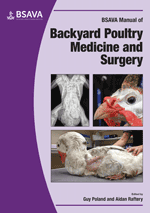
Full text loading...

Avian patients require rapid and precise diagnostic work-up as clinical findings often do not correlate with the severity of disease. Clinical pathology needs to inform individual care for pets and flock medicine, ensuring safety for public health. This chapter discusses external versus in-house laboratory diagnostics, haematology, cytology, biochemistry and electrolytes, and parasitology.
Clinical pathology, Page 1 of 1
< Previous page | Next page > /docserver/preview/fulltext/10.22233/9781910443194/9781910443194.10-1.gif

Full text loading...



























